These miniature, pocket-sized pets are incredibly adorable but also highly controversial. The American Kennel Club and other dog breed associations do not recognize the Teacup Pug as a legitimate breed. Additionally, there is a lot of controversy surrounding Teacup dogs of any breed.
Complicating things further is the existence of a similar breed that often gets sold as a Teacup Pug. These little guys are known as the Chug. Whether this mislabeling is a mistake or a breeder’s shady business practice can be hard to tell. Unlike Teacups, the Chug, which is a cross between a Chihuahua and a Pug, is legitimate and humane if bred correctly.
There are many things you should know about these pocket-sized Pugs.
This article will help you do your homework and enable you to understand what is meant by a Teacup Pug and whether you are looking for a Chug. Not only are the breeding circumstances of Teacup dogs frowned upon by veterinarians, but they come with a whole host of medical difficulties leading to very short lifespans. Chugs, however, are different.
TABLE OF CONTENTS
Appearance
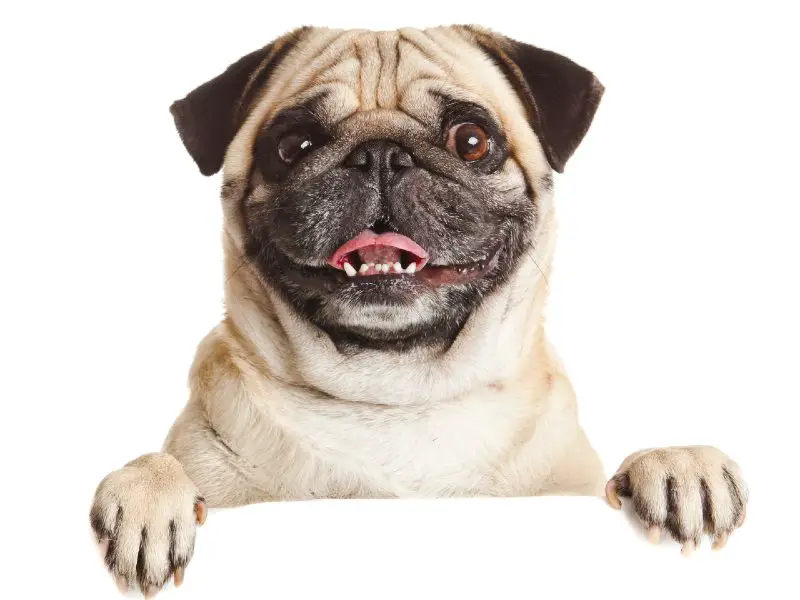
Teacup dogs, Pug varieties included, have become very popular because of their adorable pocket-sized appearance. There are Teacup Poodles, Yorkies, Pomeranians, Shih Tzus, Maltese, and many others that receive this kind of breeding treatment.
But as we saw, these little guys are not a dog breed. The term ‘Teacup’ refers only to their size, but this is an ‘unofficial’ classification. According to the reputable organizations that set up dog-size categories, ‘toy’ is the smallest recognized dog size. Since an adult Teacup Pug will weigh no more than 5 pounds, they weigh less than dogs who fall into the ‘toy’ weight classification.
The source of their small size has a lot to do with the controversy.
Some are small because they are the runts or have two runt parents. Some are small because they suffer from dwarfism or other congenital disabilities. Some are small because, tragically, premature birth was forced on them by the breeder. In either case, teacup Pugs are prone to several health problems, more so than a regular-sized pug which is a breed that is already prone to health issues of its own.
There is another possible reason for their stature: they are not a pure breed Pug but a cross between a Chihuahua and Pug. As we saw, these are called Chugs. When they are puppies, they look more like Pugs and often get sold as Teacup Pugs. As they grow, you will begin to see the Chihuahua features come through, especially with their longer snout.
It’s important to note that while Teacup Pugs are not a breed of dog, Chugs are a ‘toy’ breed of dog and do not have the same issues that a Teacup will have.
Chugs are smaller than your average Pug because they have inherited the Chihuahua’s frame. They can be anywhere between 3 to 10 pounds depending on their genes, meaning some Chugs are close to teacup size, and some will be much bigger.
For Chugs, black is a rarer color. They almost always come in fawn or brown because the black gene seems to be less dominant. Some will be a little darker, however, and some will be brindled with black and brown.
Their color is one way to tell if you have a Chug or a Teacup Pug. If it’s black, it’s probably not a Chug. Teacup Pugs can come in fawn, silver-fawn, black, or apricot colors.
A full-grown adult Teacup will weigh between 2 to 5 pounds and have a life expectancy of 6 to 10 years. Like their brothers and sisters, Teacup Pugs have a shortened brachycephalic head. Although petit, they will have the same compact, square frame as regular Pugs, a large round head with large dark eyes, and a brow full of furrows and wrinkles.
They will also have the characteristic black face masks of regular Pugs, soft, velvety ears, short muzzles, and small teeth complete with the typical Pug underbite.
Teacup Pug Personality and Temperament
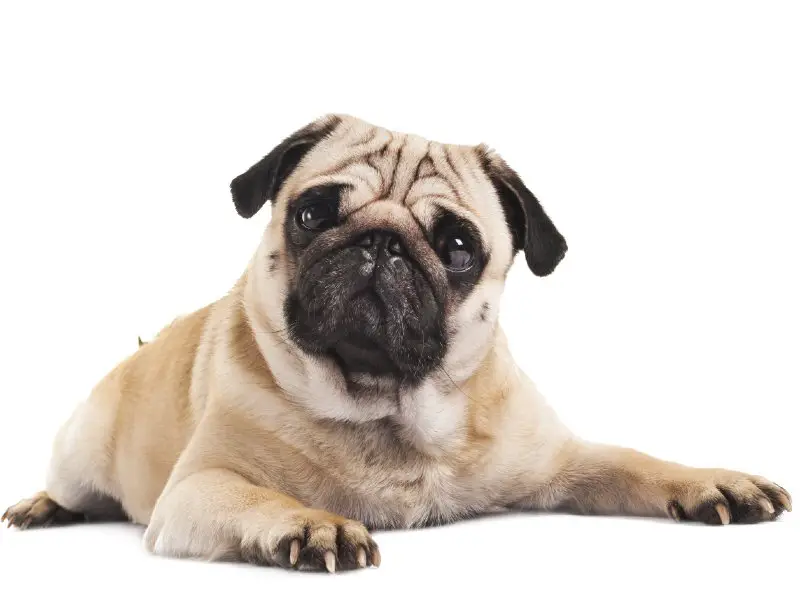
Teacup pugs will have several psychological issues that are directly related to their size and breeding process. They often suffer from chronic stress, learning difficulties, and behavior issues such as Napoleon Syndrome (when they think they are the boss).
Harsh breeding techniques are the cause of these issues, and so are the conditions they face directly after being born. As we saw, some are born prematurely, which is bad enough. Many also suffer from malnutrition after birth because they are deprived of food to keep them small. Many get sold long before they should and during a time they should be spending with their mother and siblings.
Having said that, regular Pugs are naturally loving, loyal, and affectionate, and the teacup variety, despite their problems, will indeed display these characteristics as well. They have a strong mind, and this, combined with their size-related issues, can make them a challenge to train. With positive reinforcement, consistency, and kind patience, you may get some good training results.
Pugs are naturally low-activity breeds who prefer to stay inside. There, they love curling up next to their owners. Their temperament is befitting of their couch potato reputation. Pugs and their Teacup relations are usually calm and seldom get overly excited about anything. However, teacup varieties will be much easier to stress.
Is the Teacup Pug a Good Family Dog?
Many people mistakenly believe that the smaller the pet, the better it is for kids. Some smaller breeds can indeed be a good choice for life in a loving family, but it depends less on the dog and more on its training. A good socialization training program and a child’s ability to be careful and gentle with a tiny dog are primary considerations.
But Teacups Pugs are not your ordinary dog. Like regular Pugs, Teacups love attention (albeit in smaller doses). Standard Pugs do get along well in a family setting with cats, other dogs, adults, and babies. But the smaller Teacup size makes them highly vulnerable to injury from larger dogs, cats, and children who do not know how to handle them properly.
Therefore they are likely not the best for a family environment.
How to Train a Teacup Pug
Like normal-sized Pugs, Teacup Pugs are very strong-willed and stubborn. This, combined with their small stature and other issues, makes them somewhat challenging to train correctly. But that does not mean it can’t be done.
Small dogs, including Teacups, are trained the same way that bigger dogs are, but you will have to make several adjustments to fit their size.
Regardless of your pup’s size, you’ll want to ensure that he has good manners that will make him welcome wherever dogs are allowed. Respect your little friend’s needs and what he prefers, and never coerce him just because he’s smaller than you. Most importantly, protect your little pup from unwanted attention and situations that might be harmful to him.
If a larger dog approaches, you will want to pick him up. You don’t want bigger dogs playing with your Teacup pup because it can lead to severe stress or injury. This is why toy dogs and Teacups are frequently referred to as ‘arm dogs’ because they will be spending a lot of time in your arms as you carry them about for their protection.
Because they are so easy to pick up, many owners of these dogs do not adequately train them. This is easy to see out in public, and small dogs get a bad reputation for being ill-mannered, reactive, straining on their leash, and yappy.
But you can train smaller dogs, including Teacups. It’s just as important for them as it is for you. Positive training techniques are the preferred manner of training dogs of all sizes. However, the expectations for training a smaller dog are often very different from that of a larger breed.
Owners of larger breeds likely understand training to include everything from good manners to coming when called, walking correctly on a leash, greeting people and other dogs.
But owners of Teacups will likely have different training expectations. They may only want their little ones to be potty trained, whether that’s outside or in a litter box or pad. Things like jumping up seem much more acceptable from a 4 or 5-pound dog, so teaching polite greetings can sometimes seem unnecessary. You will have to make this choice.
Here are a few adjustments you’ll want to make when training your Teacup Pug:
- Body language: things like a direct approach, looming, eye contact, assertiveness will be intimidating to little Teacup dogs. Think how much larger your body is. Until he learns to read and trust you, make sure you are conscious of these things. In the beginning, sit on the floor with your pup or put him on a raised surface. This will minimize your stature.
- Small treats: When training a Teacup, make sure the treats are very small, and consider whether he needs his next meal based on how many training treats you have given him. Although Teacups need to eat more frequently than other dogs, they can still pack on the pounds, making other issues worse.
- Teacup harness: A small dog like a Teacup Pug has a vulnerable esophagus and can really hurt its throat if you use an inappropriate leash. A harness is a better option for these tiny pups.
- Pick-up cue: this is a warning that you will use for your little friend to let them know that you are about to pick them up. It can be as simple as saying ‘Okay,’ and then picking him up. This just gives him time to realize what you are about to do so he can prepare himself. Otherwise, he might be startled if you pick him up without warning.
Caring for a Teacup Pug
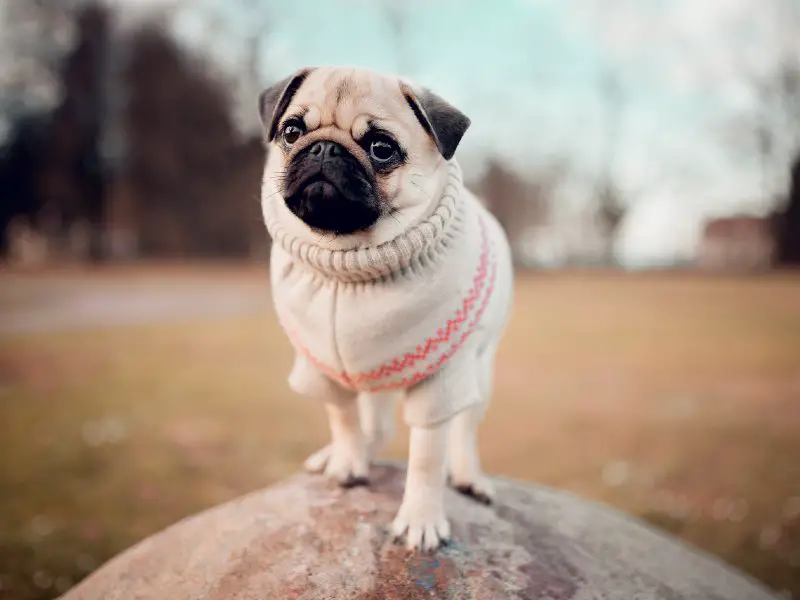
Teacups come with many additional needs because they are prone to health and behavior issues. Please pay special attention to their diet and nutrition, as well as their environment.
With a Teacup Pug, ensure that they live a life of reduced stress. To do this, create a routine for them and stick to it. Teacups will need play and exercise but in short doses. Teacup pugs will also need plenty of sleep, at least 14 hours worth.
They have a hard time regulating their body temperature, especially keeping warm in cold weather. Be mindful of the temperature outside and inside, and make sure you have an appropriately sized sweater on hand for when your little one gets too cold.
Because they are so small, their bones are less robust, and there are many more opportunities for them to break. Owners must be alert that they do not jump from high surfaces, even their arms, and that they don’t get stepped on.
Exercise Requirements
It would be best if you didn’t take your Teacup Pug with you everywhere. This is especially true if you live in the city or are going places that the dog is not used to visiting. A new situation will only create anxiety for your little one. They can get plenty of exercise and play in their own environment where new and unexpected stimuli will not stress them.
If you do want to take them outside, a very short walk with an appropriately sized harness in a quiet park will be all they need.
Grooming and Shedding
Teacup pugs have the same coats as their regular-sized friends. Short, smooth, and glossy, it will require minimum maintenance, although they do shed. Gentle weekly brushing with a rubber grooming mitt or hound glove will help keep him looking his best. Teacup Pugs should only be bathed if they are soiled, and their nails will need regular trimming.
Feeding and Diet
Feeding your pug a nutritious meal three or four times a day, or every three to four hours will help prevent hypoglycemia. Make sure you are giving your pug nutritious appropriately sized food. Adding Karo syrup to their food will help level out their blood sugar. Their diet should be enriched with vitamins and minerals and omega-three fatty acids.
Owners must be careful to strictly stick to a schedule when it comes to their food intake. One missed meal can cause their blood sugar levels to fall dangerously low. Not only can this cause seizures, but death can occur. A smaller stomach and higher metabolism means they need to be fed smaller amounts more often throughout the day.
Please provide them with the same high-quality dog food as you would a regular-sized Pug.
Known Health Problems
The potential health defects of Teacup Pugs, and all Teacup dogs in general, are quite significant, so there will be a lot of information in this section. But knowledge is power, and it is essential to realize what the risks are for this pup.
It is important not to forget that health risks are bad for your dog, and they also come at a high financial cost to you personally.
Teacup Pugs are in high demand. Because of this, and the profits a breeder can make, many breeders go to extreme lengths to manipulate their breeding. Breeders are always trying to create smaller and smaller dogs, which has resulted in many health problems for these tiny creatures.
Teacup Pugs (unless really Chugs) are purebred dogs. Purebreds in general have a higher risk of poor health and lower lifespans. But even more so for the Teacup breeds who have further complications stemming from smaller organs and a lack of moisture inside their bodies. Combine this with blood sugar irregularities and the respiratory problems that affect their regular-sized brothers and sisters.
They also have an increased risk of liver shunts. This is a congenital disability in dogs that reduces the liver’s ability to get rid of toxins. Not only do some kinds of liver shunts not respond to therapy, but they can cost you up to $6,000.
Dental and gum issues are also a problem for smaller dogs. Baby teeth tend not to fall out on their own, and veterinarians often have to remove them whenever the animal is neutered or spayed.
Joint issues are a common size-related medical problem for Teacup dogs, particularly patella luxation, more commonly called ‘sliding kneecap.’ Not only does this issue affect your dog’s walking abilities, but it will also make them much more prone to arthritis.
Hydrocephalus, or ‘water in the brain,’ is another predisposition caused by their breeding conditions.
Sadly, while a regular pug can live for 13+ years, a teacup will likely only live to about 6, but many do not even make it to that age.
Some other common health issues for Teacup Pugs include the following:
- Hypoglycemia
- Heart defects
- Collapsing trachea
- Seizures
- Respiratory problems
- Digestive problems
- Blindless
Buyers Guide
| Pros | Cons |
| Adorable ‘teacup’ size will get everyone’s attention | Suffer from multiple health problems |
| They take up less room | Frequent high vet bills |
| Backyard not required | Tiny bones are easier to break |
| Minimal food requirements | It’s easier for them to feel threatened |
| Only need a short walk | Permissive owners overlook bad behaviors because of their size |
| Affectionate, loyal, friendly, and loving | |
| Tiny, inoffensive poops and can be litterbox trained | |
| Highly portable |
As we have seen, Teacups face many troublesome health issues. So if you’re looking for an adorable Pug that’s a little on the smaller end, consider getting a Chug. They can be just as small, are more humane, live longer, and have much better health.
As many dog experts will tell you, make sure you are thoroughly researching any potential breeders or that you are adopting from a shelter.
Many believe that teacup puppies are a scam or marketing ploy that uses unethical breeding practices to stick a high price tag on what amounts to an unhealthy animal. However, the market for Teacups is a large one, and there are undoubtedly many people who will take good care of them.
How Much do Teacup Pug Puppies Cost?
If you are committed to getting a Teacup Pug, remember the breeders have a marketing edge because of how popular these tiny pups are. You will likely be paying for this fact to the tune of a few thousand dollars.
They cost about $300 in the low range and on the higher end upwards of $4,000.
Quick Breed Summary
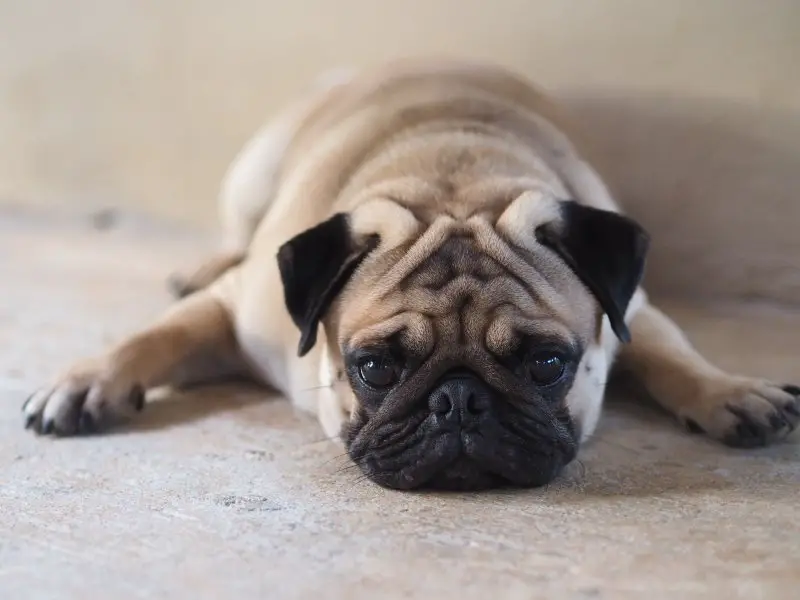
| Breed Characteristics | |
| Size: | Fewer than 17 inches |
| Weight: | 2 to 5 pounds |
| Lifespan: | 6 years or less |
| Coat: | Short, double-layered coat |
| Color: | Black, fawn, apricot, silver |
| Do They Shed: | Heavy shedders |
| Temperament: | Affectionate, loyal, but anxious and can have behavior issues |
| Intelligence: | Intelligent, but prone to psychological issues |
| Socialization: | tolerant of other dogs, especially larger |
| Destructive Behavior: | Anxiety |
| People Skills: | Nervous around strangers unless socialized |
| Good with Children: | Tolerant of children, but children can pose a risk to it |
| Activity Levels: | Low energy couch potato |
Summary
We have seen many of the Teacup Pug’s positive features, such as its cuteness and loving personality. But we have also seen that this breed often suffers from multiple health problems. We recommend searching for a breed that can live a long, happy, healthy life and that you do not support the breeding of Teacup dogs.
Many veterinarians say they would prefer breeders put a halt to creating mini breeds like this. The high risk of health troubles means a great deal of unnecessary suffering for the animal. If you still insist on getting one, ensure it comes from a reputable rescue or breeder. Make sure you do your homework. Find the healthiest animal you can and be diligent in meeting its needs.
What is a Teacup Pug?
In reality, there is no such thing as a ‘Teacup’ dog. It is recognized as a breed by the American Kennel Club or any other dog association. Teacup simply describes the size of the dog. We’ve learned that the cost of achieving this size is high and that it can cause the dog a great deal of suffering.
The lesson is, when you breed a dog simply for the way it looks with no regard for the health of the genetic stock it comes from, problems will emerge. This is as true for the Teacup Pug as it is for all the other dogs whose breed receives the Teacup treatment.
So, although they are loving, affectionate pets, it’s best to look elsewhere if you are craving that tiny cuteness factor.



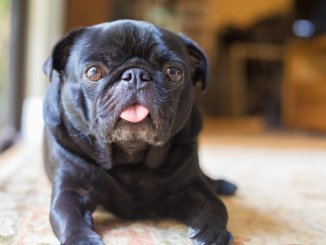
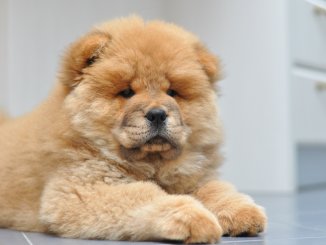
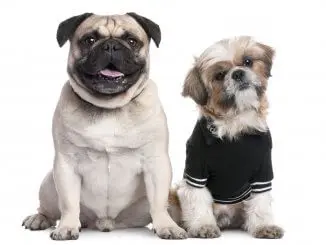

Be the first to comment